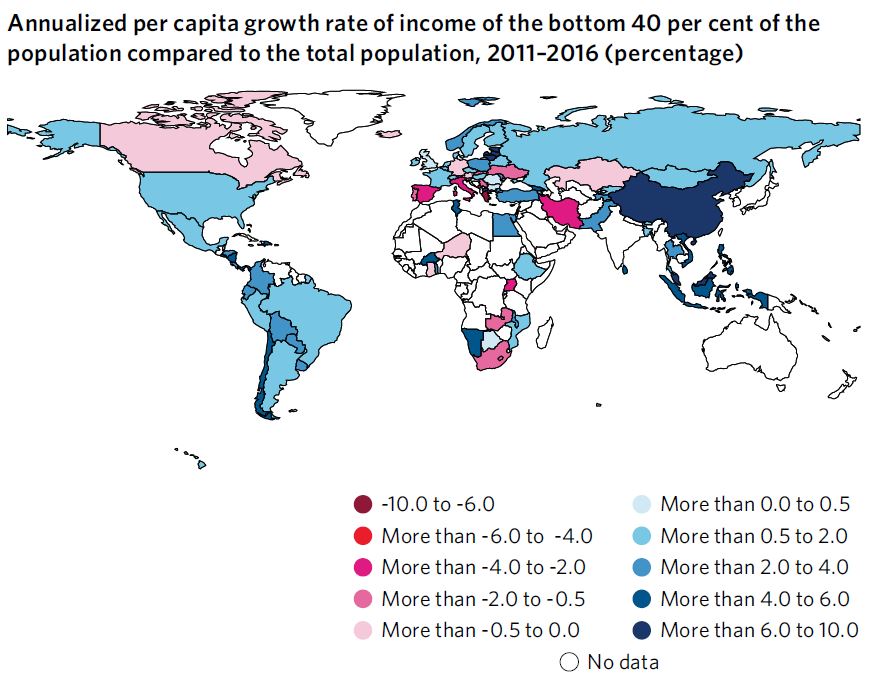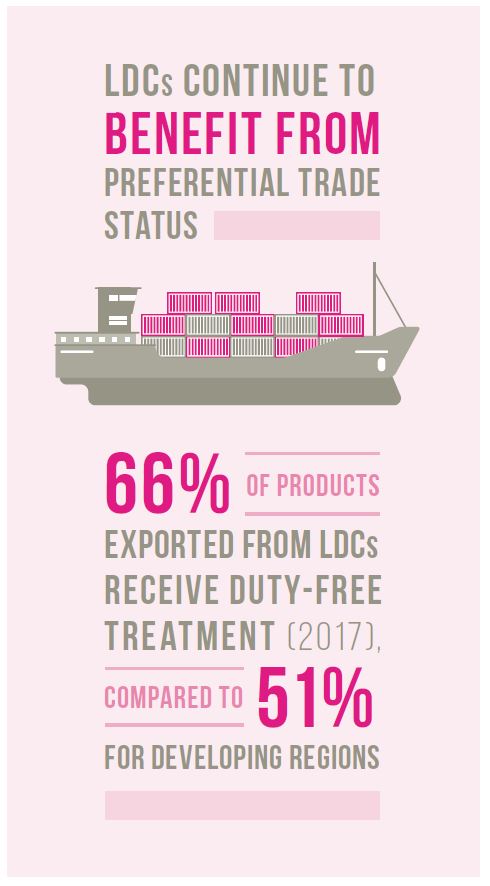To gauge whether the poorest people in a country are participating in economic progress, it is useful to compare the growth of household income (or consumption) of the poorest 40 per cent with that of the population as a whole. That provides one indication of whether overall prosperity is being shared with the bottom 40 per cent of the income ladder in a country.
In 92 countries with comparable data over the period 2011 to 2016, the results were mixed. In 69 countries, the poorest 40 per cent saw their income grow, but with large variations among countries. In 50 of those 69 countries, income growth in the poorest 40 per cent of the population was faster than the national average. Notably, however, the bottom 40 per cent still received less than 25 per cent of overall income. In many countries, an increasing share of income goes to the top 1 per cent.



